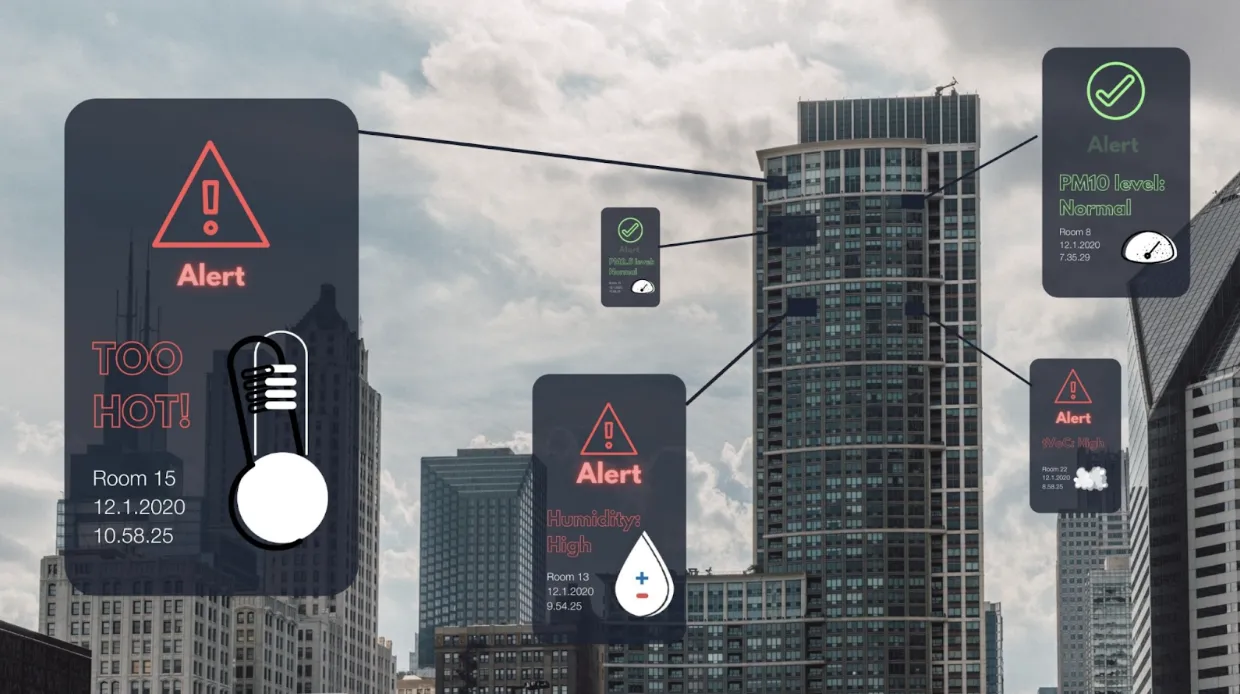How IOT Technology Revolutionized the Smart Building Market?
IoT or Internet of Things is integrating the digital world with the physical world through real time data available from digital systems linked together. Any device that can be connected to the internet can be a part of IoT and thus a network of these things is formed for exchanging real time data. This device could be anything from cell phones, laptops to coffee maker, car, lamp, headphones etc. In some cases, even an airplane engine is a part of IoT. By 2021, 35 billion IoT devices will be installed around the world.
Sensors and IoT
Sensors are one key factor in IoT success, but these are not conventional types that simply convert physical variables into electrical signals. They have needed to evolve into something more sophisticated to perform a technically and economically viable role within the IoT environment.
Sensors have traditionally been functionally simple devices that convert physical variables into electrical signals or changes in electrical properties. While this functionality is an essential starting point, sensors need to add the following properties to perform as IoT components:
- Low cost, so they can be economically deployed in large numbers
- Physically small, to “disappear” unobtrusively into any environment
- Wireless, as a wired connection is typically not possible
- Self-identification and self-validation
- Very low power, so it can survive for years without a battery change, or manage with energy harvesting
- Robust, to minimize or eliminate maintenance
- Self-diagnostic and self-healing
- Self-calibrating, or accepts calibration commands via wireless link
- Data pre-processing, to reduce load on gateways, PLCs, and cloud resources
Before the IoT had a massive impact all over the world, there were two methods to measure indoor air quality: handheld devices or BMS sensors. Despite the high accuracy of handheld devices, facility management teams just monitor air quality a few times a year by using those devices due to it’s not easy to use or carry with you. The teams could not get required insights with those devices due to lack of correct collected data. Secondly, Traditional BMS vendors focus on the wired hardware leaving Facility Managers with extremely complicated, costly and clumsy dashboards on the software side. Consequently, facility management teams fail to achieve their KPIs in terms of indoor air quality. Facility Managers must always stay ahead of the curve when it comes to regulating indoor air.
IoT technology provides a scalable, affordable and configurable disruptive solution to this problem. IoT technology has provided following advantages to indoor air quality monitoring market.
Affordable sensors
Affordable and reliable sensors are making IoT technology possible for almost all building owners.
Network and Security
An end-to-end encrypted, independent, low power, reliable network must exist between sensors to collect data in a scalable yet risk-free manner. Network Architecture transmits encrypted data over radio frequency signals and decrypts it back only in the cloud. Therefore sensor data is out of access for unauthorized visitors.
Data Intelligence
AI combined with intuitive digital tools to transform the massive incoming data into actionable insights by the building staff. Most of the facility management teams cannot follow and analyze all of these parameters. They don’t have relevant background and appropriate training to make use out of it.
Integration Between Building Systems
Most building systems and sensors do not provide default integration for different systems. Separately working systems are not able to create effective outcomes to optimize air quality and HVAC management in the building.


